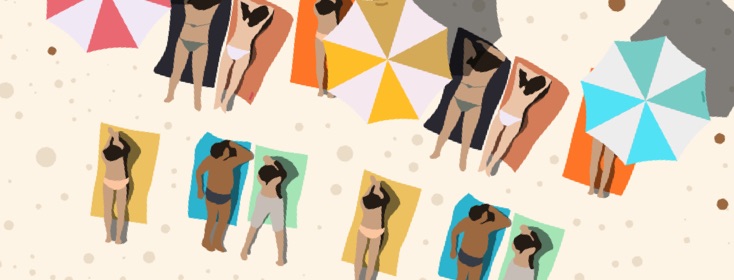Protect Your Skin from Photosensitive Reactions
This summer has been glorious; not too hot and less humid than usual. Rob and I have spent more time outside this summer than we have in the past few years. I even experienced my very first wasp bite in the process. Ouch.
Although I had my share of insect bites, one thing I didn’t experience this summer is a sunburn. Two summers ago, I learned firsthand what it means to be photosensitive and since that time, I’ve become very careful about getting too much sun.
Protection from potential photosensitivity
The sun was brighter than I had seen in a very long time. Even sunglasses couldn’t keep me from squinting myself into a headache. I was wishing that I had packed a wide-brimmed hat for the trip. Rob and I were in Switzerland following a conference I had spoken at and we had extended our trip for a few days to explore the beautiful cities of Zurich and Lucerne.
Sights and sun in Switzerland, 2012
On our first full free day, Rob and I took the train into old town Zurich. During the short ride, I slathered sunscreen on my face, neck, and arms. I wanted to make sure that I was protected from the ultraviolet light and insisted that Rob do the same. Our skin was armed and ready to go and I felt protected against potential photosensitivity.
What is photosensitivity?
Photosensitivity, also called sun sensitivity, is an inflammation of the skin caused by a combination of certain chemicals and exposure to the sunlight.1 Some medications commonly taken for RA may contain these light-activated chemicals. Exposure to either the light or the chemical alone is not enough to cause the reaction.
Photosensitivity is a common side-effect of methotrexate, Plaquenil, and NSAIDs such as Celebrex or Advil. Photosensitivity may also be a serious side-effect of anti-TNF drugs such as Cimzia, Enbrel, Humira, Remicade, and Simponi, as well as sulfasalazine. It is not considered a side-effect of Actemra, Arava, Kineret, Orencia, or Rituxan. Always talk to your rheumatologist about potential side-effects of medications, including photosensitive reactions, and report any unusual symptoms you may have.
Types of photosensitive reactions
There are two types of drug-induced photosensitive reactions: phototoxic reactions and photoallergic reactions. Phototoxic reactions require large amounts of exposure to both the chemical and ultraviolet light. The reaction resembles an exaggerated sunburn and can occur quickly, within minutes or hours of exposure. Phototoxic reactions will only appear on sun-exposed skin, however the less common photoallergic reactions can spread to unexposed areas. It can be difficult to distinguish between the two types of reactions.
What does a phototoxic reaction feel like?
After our beautiful day in Zurich, Rob and I took the train to Lucerne. Again I lathered up with sunscreen, but this time I goofed. I missed my upper chest which was exposed by a v-neck shirt. Near the end of the day, it looked like I had developed a sunburn on my chest. Strangely, it didn’t hurt like a sunburn but my skin was definitely red.
About a week later, my chest began itching. Not the itch of a healing sunburn, but an itch which made me want to poke sharp objects through several layers of skin. Itchy, itchy, itchy!! Bumps began to emerge from under the redness and by the next morning, it was a bright red, itchy mess. It took almost three weeks for the redness to fade, but a few bumps remained. The rash only itched if I accidentally scratched it.
The next time I saw my rheumatologist, I talked to her about the incident to confirm that I had indeed experienced a case of photosensitivity. One thing I had not considered is that the night before our day in Lucerne, I had taken my weekly dose of methotrexate. The combination of medication and all-day sun exposure was all it took to cause the reaction.
How to protect yourself
If you are taking a drug thought to cause photosensitivity, your best defense is to avoid sun exposure as the combination contributes to a reaction. If you do spend time outside, minimize your exposure and protect yourself. Wear light-colored clothing, long-sleeved shirts, long pants or skirts, sunglasses, sunscreen, and a wide-brimmed hat to help protect your skin.
Know that all sunscreens are not created equal, however. Higher sun protection factor (SPF) is important but may not be enough. The SPF in sunscreen measures the amount of protection against ultraviolet B (UV-B) light, the type which causes a typical sunburn. Drug-induced photosensitivity reactions are more often caused by UV-A light.1 Look for sunscreens that contain avobenzone, titanium dioxide, and/or zinc oxide which are more effective in blocking damaging UV-A light.
If you do develop a phototoxic reaction, cool compresses and topical corticosteroids may help to alleviate symptoms. Try to avoid future reactions as repeated phototoxic reactions can damage tissue on the cellular level. Discuss your experience with your doctor. My doctor suggested that it’s a good idea to avoid taking methotrexate the night before you plan to be outside for any extended period of time. That, and always protect your skin, even in the wintertime.

Join the conversation